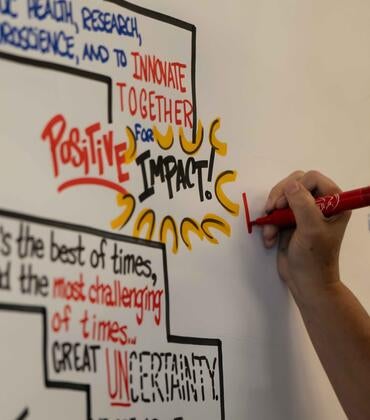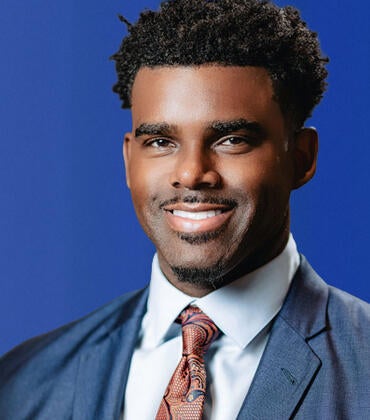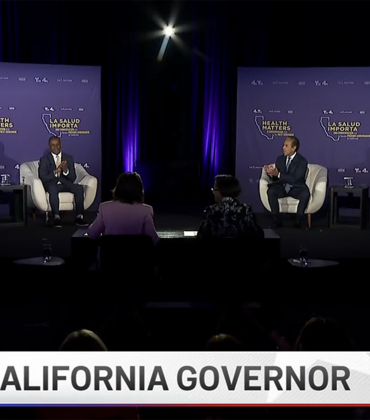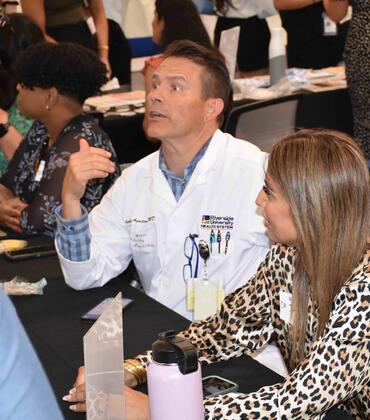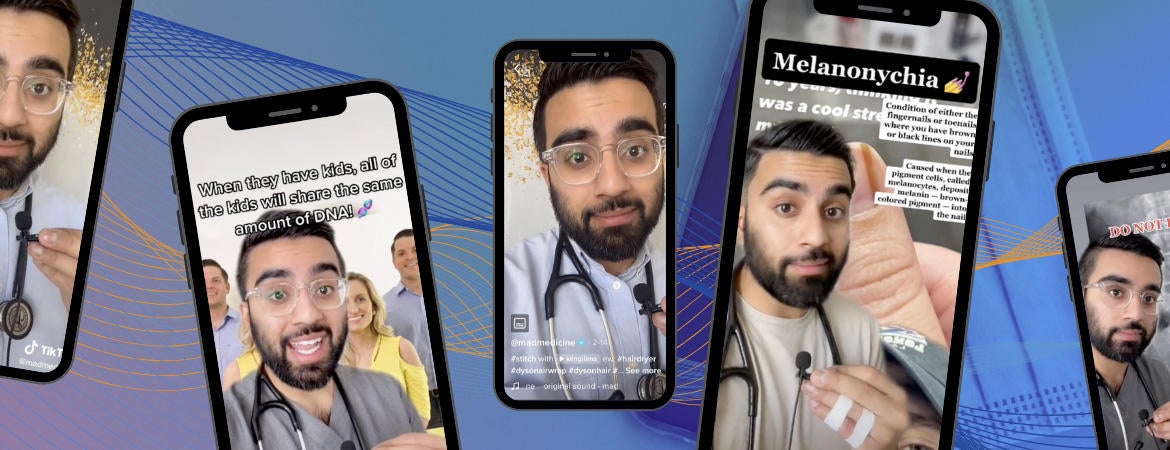
In a recent TikTok video, a young woman demonstrates curling her hair by holding it inside a public restroom hand dryer. The video cuts to Mutahir Farhan, a fourth-year medical student at the UC Riverside School of Medicine and owner of the TikTok account @madmedicine. “Yo, I hate to be the bearer of bad news,” he says to the camera, “but those hand dryers in public restrooms are extremely disgusting.” He goes on to share research finding that hand dryers spread more bacteria than paper towels. The 22-second video has been viewed more than 300,000 times.
Since joining TikTok in 2018, Farhan has created videos ranging from crazy facts about the body to explainers of viral medical videos to a day in the life of a medical student. His over 800 posts have received more than 23 million likes and earned him over one million followers on the platform.
He began posting videos as a creative way to help himself study during medical school, until a friend pointed out that the videos could be a good teaching tool. “So I started posting some educational videos and one or two of them went very viral, very early on,” he recalled. “One thing led to another and I just saw this huge demand for people to find out information.”
Since the pandemic began, Farhan said the need for credible health information has only increased. As a result, he has continued to produce educational content. “What I'm learning the more I do this is that, in general, people want to learn about their bodies at their own pace,” he said. “Education is very powerful. And the more people know, the better choices they can make.”
This is especially important in places like Riverside that have education levels lower than the national average. Farhan, who started at UCR as an undergraduate, said he initially chose the school because he lived in the area. “But the more I started working at UCR, the more I realized how much need there was [in the community],” he said. As the clinic director of the medical school’s free clinic in San Bernardino, he said, “I realized on the public side there's a huge demand [for education].”
He also found support at UCR for his research into social media as an educational platform, which he plans to continue as he enters UCR’s Internal Medicine residency program. As social media is sometimes seen as taboo in the medical field, he explained, it was empowering to have the ability to be open about his interests. “I think UCR was the best choice for what I was doing because they were very receptive,” said Farhan.
Doctors on social media
Alongside Kendrick Davis, PhD, associate dean of assessment and evaluation, Farhan has been researching the quality and sources of medical information available through TikTok. The study, which has not yet been published, analyzed 5,074 top-ranking TikTok videos on topics including diabetes, COVID-19, and mental health. It1 found that 45% of the videos’ creators were patients, while medical professionals made up just 8% of the group.
“You have folks who are not MDs presenting medical information that can run the gamut of accurate to extremely not accurate,” Davis said. Based on the research, he said that people with expertise, like doctors, should be more active on these highly used platforms. “Then, it allows for that information to be more credible and transmitted to a wider range of folks.”
Although a recent survey found that less than half of internal medicine physicians used social media professionally, Farhan said he’s noticed an increase since he started posting on TikTok. Research has confirmed the increasing presence of physicians on these platforms. “I think that there has been such a low representation of physicians on social media for such a long time that seeing this new trend has been kind of refreshing for the public,” said Farhan.
Like Davis, he encouraged doctors to share their expertise online. “Not every doctor should be on social media,” he clarified. “But I think the right ones who are interested in educating and teaching the public should.”
For doctors wondering how to get started, Farhan offered simple advice: just post. People often get caught up on what they’re going to talk about, their appearance, and the sound of their voice, but he said that doesn’t matter. In fact, he considered one of his early videos to be the “worst video I’ve ever created,” recorded after work at his dining room table—and then it went viral.
“Just post, because people are going to want to listen to what you have to say,” he said, adding that it's important to release content consistently. “Stop overthinking it.”
Content creators don’t need to be among the newer generation of doctors, either. “I follow a lot of professional physicians on social media, and the best ones are 60 years old, they've been practicing for a while, they're not camera shy, and they're comfortable talking about their specialty, because they have such a vast knowledge base not just of information but of experience,” Farhan said. “They can translate concepts way better than I can.” Their accounts can also help their own patients, who can watch their videos to supplement the information they receive during appointments.
Combating misinformation
Besides looking at content creators’ backgrounds, Farhan’s research also examined the quality of the information in their videos. His study found that less than 1% of the 5,074 videos fit the category of misinformation, which he defined as incorrect information.
Other research has reached similar results. One study on diabetes-focused TikTok videos and another on chronic obstructive pulmonary disease-related videos indicated that video information quality was “satisfactory,” but that users should still be cautious when choosing an information source.
In some cases, though, misinformation is more prevalent. Another study of 100 trending COVID-19 vaccine videos on TikTok found that over one-third of the examined videos, and around half of user engagement, centered on misinformation about vaccines.
According to Farhan, the right way to address misinformation isn’t by silencing it. “You can't hide it because that takes away the public's trust in us as physicians,” he explained.
Instead, his videos help counter misinformation by presenting scientific proof in a way the average person can understand, allowing them to reach their own decision. “It's just trying to dismantle their points, and then showing them why they're wrong without being too condescending or too unprofessional,” Farhan said. While the videos won’t convince everyone, he said they’re more likely to change the minds of people who are still undecided.
Of course, medical professionals sometimes share wrong information too. After one video Farhan posted, a friend told him that he’d incorrectly described a concept from a research article. Farhan took down the video and posted a new one explaining the mistake. “You can’t be misquoting things. You’ve got to do your due diligence as much as you can,” he explained, but added that we’re all human. “If I make a mistake, I've learned to just accept it,” he said. “It's better to own up, accept, apologize, and then move on.”
Finding credible sources
Disinformation and errors naturally lead to the question: Who can be trusted online? “Even in my videos, I'll say, you shouldn't trust anyone on the internet. You shouldn't even trust me,” said Farhan, encouraging viewers to consult a medical professional directly.
Since physicians are often pressed for time during appointments and millions of people already receive health information from social media, though, it’s important to know how to find reliable sources. Farhan offered a few tips. “The main thing is there should be some transparency behind who you're getting the information from,” he said. This includes openness about any health credential that they hold. Then, “if something seems off, do your own research,” he said.
This holds for everything from verifying the creator’s credentials—which will be public record if they’re a doctor—to checking other videos or articles. “Nowadays with the internet, you can learn about literally anything,” Farhan said. His main advice, though, is to take specific questions offline. “If you don't think it's true, you should talk to your doctor,” he said. Your doctor is also the best person to ask about personalized, specific health questions that general online videos cannot cover.
Teaching future doctors
Educating the public is one of Farhan’s main goals, but it’s not his only one. His website, madmedicine.org, offers free content to help medical students pass their Medical College Admission Test (MCAT) and the U.S. Medical Licensing Examination (USMLE).
Farhan said that exam fees are already an added expense on top of a medical degree, with preparatory courses costing even more money. “I knew that not everyone had that type of access. I personally didn’t,” he said. “I wanted it to be free for everyone, so I started posting these for free.” He is working on developing content and plans for the website to become an ad-supported, free educational platform for medical students. Eventually, he aspires to a career in education working with students in medical school.
For now, he’s teaching people by reaching them where they’re at on TikTok, and by encouraging other doctors to do the same. “The truth is, the public is on there and that's where information is being transferred,” he said. “We need to have representation on there.”
Photo credit: TikTok/@madmedicine. Photo design: Paulina Laroya
